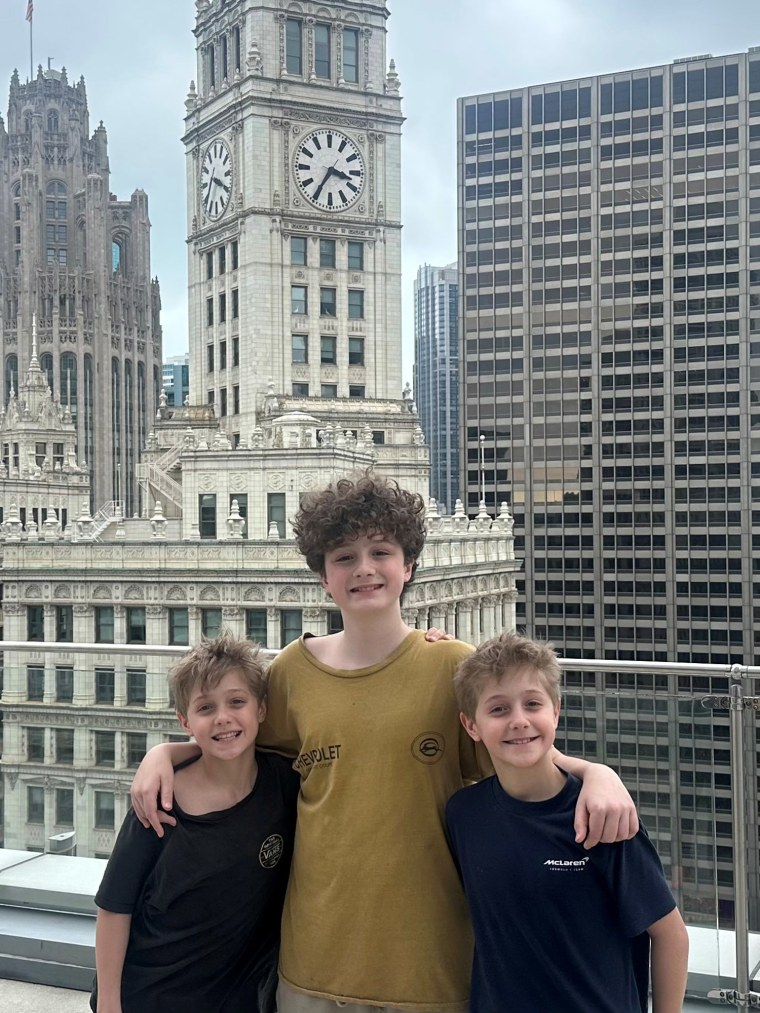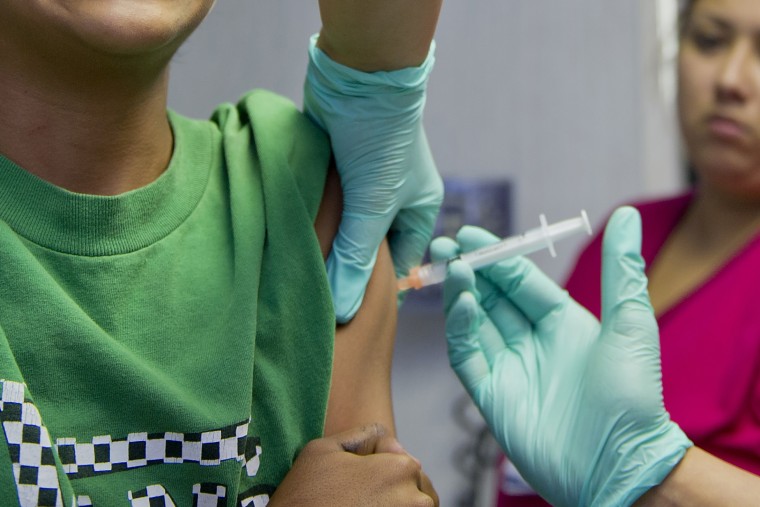Kate and Greg Moor weren’t thinking “whooping cough” when their son, 13-year-old Joe, started having coughing fits in early March.
Joe probably just had a late winter virus, the Bloomfield Hills, Michigan, couple figured. Maybe it was spring allergies. Other than the coughing, he seemed fine.
Cough medicine didn’t touch Joe’s brutal and increasingly frequent coughing jags — sometimes every five to 10 minutes for hours at a time.
“It was a very violent cough. I just had to pause what I was doing and wait until I was done coughing,” Joe said. “Sometimes it felt like I’d throw up.”

It was difficult to watch Joe’s body convulse uncontrollably, said his mom, Kate. “Nothing seemed to be working,” she said. “It just seemed really aggressive. He’d double over.”
Tests revealed that Joe had pertussis, a bacterial infection. It’s also called whooping cough because of the sound some kids make during the coughing fits that Joe experienced.
The constant hacking is exhausting and sometimes life-threatening, doctors say, especially for small children and babies with tiny airways.
“They’re unable to catch their breath,” said Dr. Sapna Singh of Texas Children’s Pediatrics near Houston. “They’re fighting for air. They’re fighting to breathe.”
The virulent cough is unparalleled.
“I had a patient this year who broke two ribs coughing,” said Dr. Molly O’Shea, a spokesperson for the American Academy of Pediatrics. “We had an infant who coughed so hard that they ended up with a pneumothorax,” also known as a collapsed lung. “That’s essentially when your lung pokes a hole out of itself and air starts collecting outside the lung.”
Why whooping cough is making a comeback
Whooping cough has been increasing since the early 2000s, according to Centers for Disease Control and Prevention data, with about 10,000 reported cases each year. The spread slowed during the pandemic lockdown, as many infectious illnesses did, but cases are rising once again.

In Michigan, where the Moor family lives, whooping cough cases have skyrocketed. There were 110 cases in the state in 2023, according to the state’s department of health. In 2024, 2,081 cases were reported — a nearly 1,800% increase.
The state’s on track to meet or exceed last year’s number. In 2025, 497 whooping cough cases have been reported in Michigan.
In Louisiana, two young infants died of pertussis within the last six months, the state's surgeon general posted on Facebook at the end of March. In South Dakota, aschool-age child died from a co-infection of influenza and pertussis in January, the Department of Health reported. Pertussis contributed to the death of an adult in Idaho in February, according to the state's Central District Health.
The most common complication of whooping cough is pneumonia, which can be fatal.
So far this year, there have been 8,064 reported cases of whooping cough in the U.S., compared with 3,835 for the same time in 2024, according to the CDC. And there were more than four times as many whooping cough cases in the U.S. in 2024 compared with 2023.
According to the medical journal BMJ, if the current trend continues, the U.S. may be on course for the highest number of infections since vaccination was introduced in 1948.
Vaccine hesitancy in general is playing a major role in the increase. “We have clear indication that our vaccine rates are falling,” Singh of Texas Children’s said. “Look at the West Texas measles outbreak.” Almost 600 cases of measles have been reported since late January in West Texas.
A 2024 CDC report found that the percentage of U.S. kindergartners during the previous school year who had been vaccinated against both measles and whooping cough dipped to less than 93%. In 2019, the national coverage rate was 95%.
What's more, the pertussis vaccine doesn’t work as well as it used to. In the 1990s, manufacturers altered the way the vaccine was made to reduce its side effects, like fevers and vomiting. As a result, the shot’s effectiveness isn’t as robust. Boosters are needed every 10 years.
And research published by the CDC in 2019 suggested that the bacteria behind the disease had mutated. In 2024, the Food and Drug Administration met to discuss the need for more robust and longer-lasting versions of the whooping cough vaccine.
As of April 2025, nothing has come of those discussions.
There isn’t any real treatment for whooping cough. Like in Joe Moor’s case, cough drops and over-the-counter cough suppressants don’t work. Antibiotics, such as azithromycin or Z-Pak, are given, but they don’t cure the cough. They’re meant to protect others.
“By the time you’ve got the symptom of the cough, which is what prompts the diagnosis to be made, the cascade of immune response that causes that spasmodic coughing is underway, and there is no treatment for that,” she said. “We use antibiotics to clear the bacteria from the nasal passages so that you don’t spread it.”
How to prevent whooping cough spread
The CDC says that babies should begin their first round of pertussis vaccines at 2 months, with follow-up shots at 4 and 6 months.
Another shot is given before the child reaches age 2, and again around the start of kindergarten. Because the vaccine wanes, it’s recommended that preteens, around 11 or 12 years, get a booster.
It's middle and high schoolers whose immunity has waned that's driving outbreaks, O'Shea said. She sees cases year-round in this age group.
The Moors felt they’d done all they could to protect Joe and his two younger brothers from vaccine-preventable illnesses. All three boys had received the recommended childhood vaccines, including a pertussis booster for Joe, a week after he turned 11.
While the vaccine isn’t 100% effective — no vaccine is — symptoms are generally less severe in vaccinated people, according to the American Lung Association.
Despite the coughing fits, Joe’s case was relatively mild. “I don’t know how it would have manifested if he hadn’t been vaccinated,” Kate Moor said.
